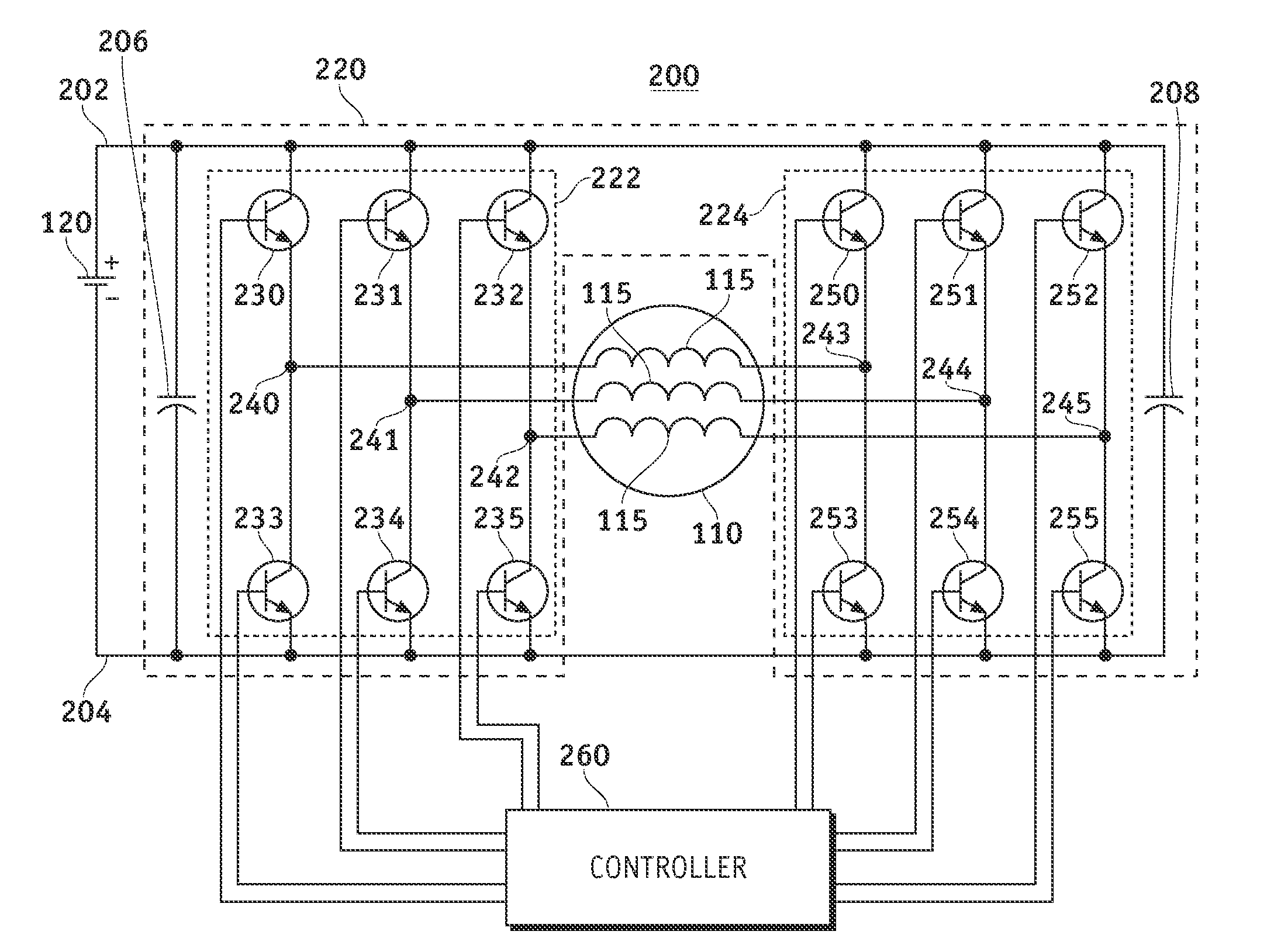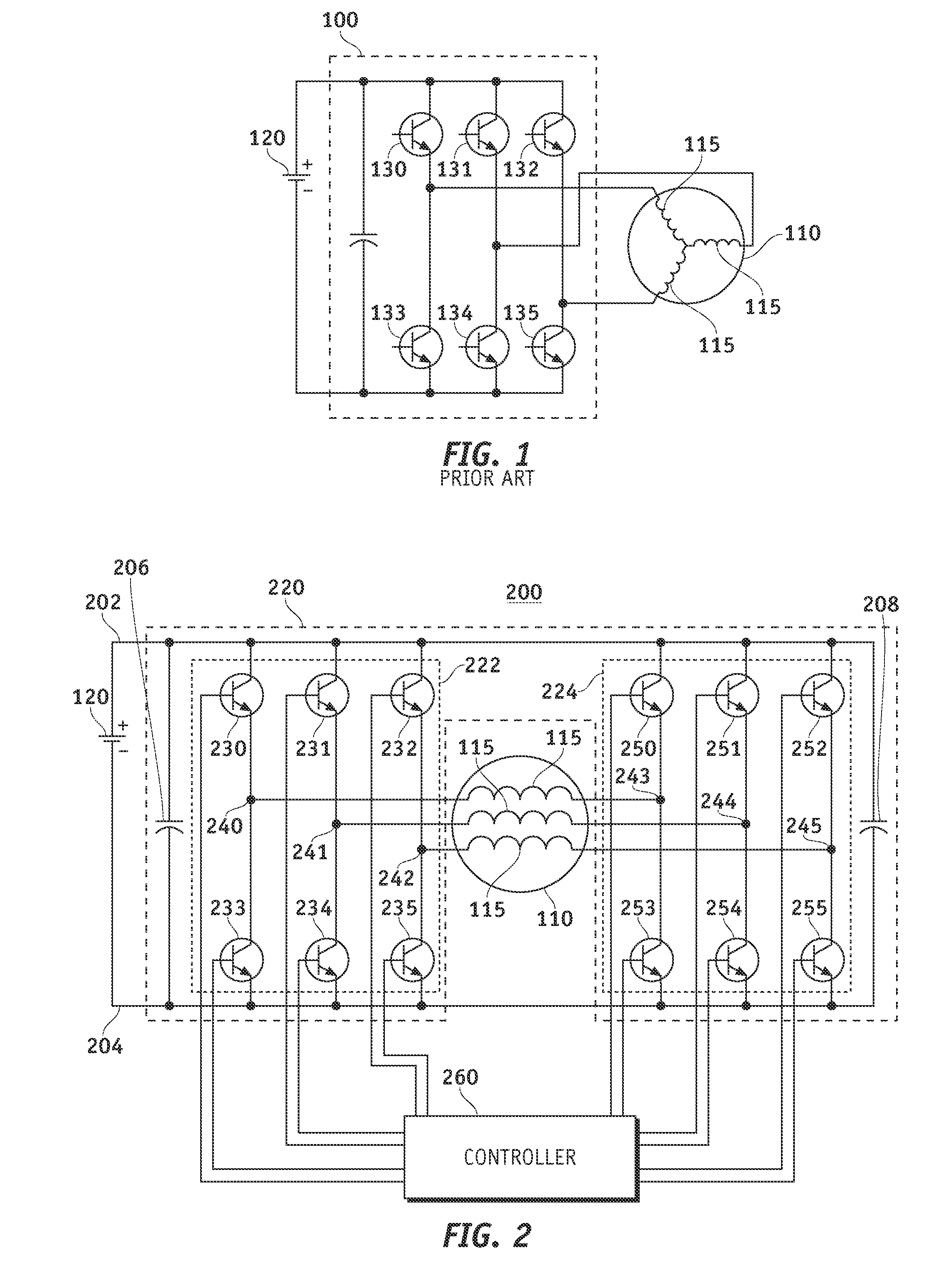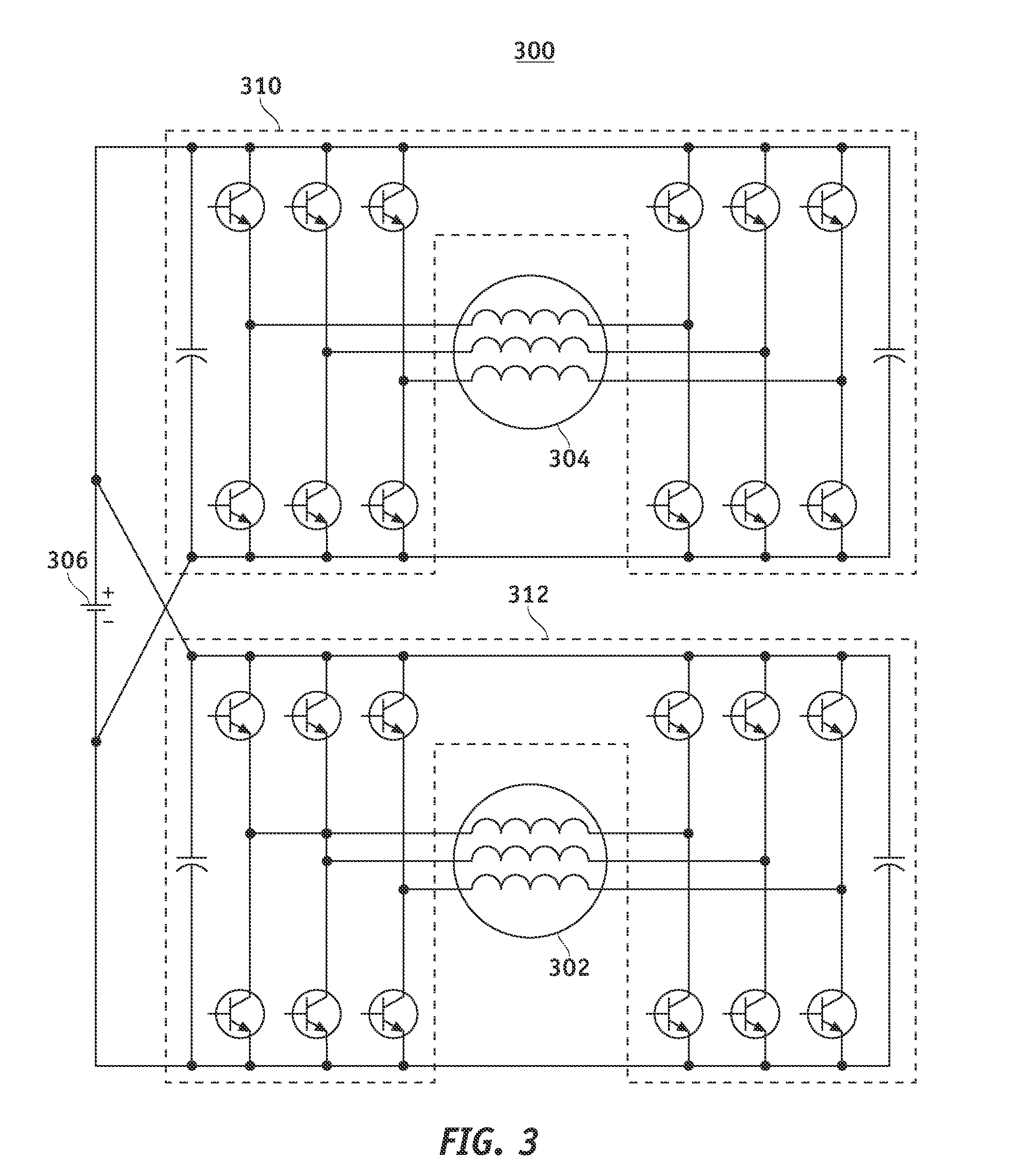Inverter topology for an electric motor
a topology and electric motor technology, applied in the direction of electronic commutation motor control, motor/generator/converter stopper, dynamo-electric converter control, etc., can solve the problems of additional magnets, additional dc voltage burden, and motor requires additional spa
- Summary
- Abstract
- Description
- Claims
- Application Information
AI Technical Summary
Benefits of technology
Problems solved by technology
Method used
Image
Examples
Embodiment Construction
[0011]The following detailed description is merely exemplary in nature and is not intended to limit the invention or the application and uses of the invention. Furthermore, there is no intention to be bound by any expressed or implied theory presented in the preceding technical field, background, brief summary or the following detailed description.
[0012]Referring to FIG. 1, a conventional inverter 100 for a wye-connected three-phase electric motor 110 is connected between lines 115 of the motor 110 and a power source 120. This conventional inverter topology utilizes a six-switch inverter 100 including transistors 130 to 135, such as Insulated Gate Bipolar Transistors (IGBT), operating in response to signals from a controller (not shown) to provide a direct current (DC) link across a line-to-line portion of the motor 110.
[0013]FIG. 2 depicts an electric motor system 200 including a six-leg inverter 220 coupled to an open end-winding three-phase alternating current (AC) motor 110 wher...
PUM
 Login to View More
Login to View More Abstract
Description
Claims
Application Information
 Login to View More
Login to View More - R&D
- Intellectual Property
- Life Sciences
- Materials
- Tech Scout
- Unparalleled Data Quality
- Higher Quality Content
- 60% Fewer Hallucinations
Browse by: Latest US Patents, China's latest patents, Technical Efficacy Thesaurus, Application Domain, Technology Topic, Popular Technical Reports.
© 2025 PatSnap. All rights reserved.Legal|Privacy policy|Modern Slavery Act Transparency Statement|Sitemap|About US| Contact US: help@patsnap.com



